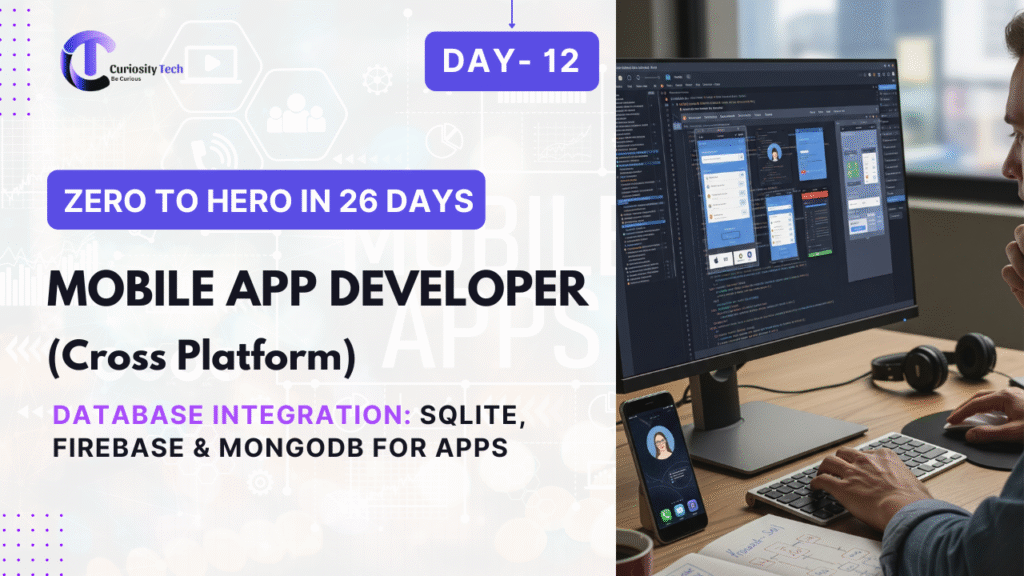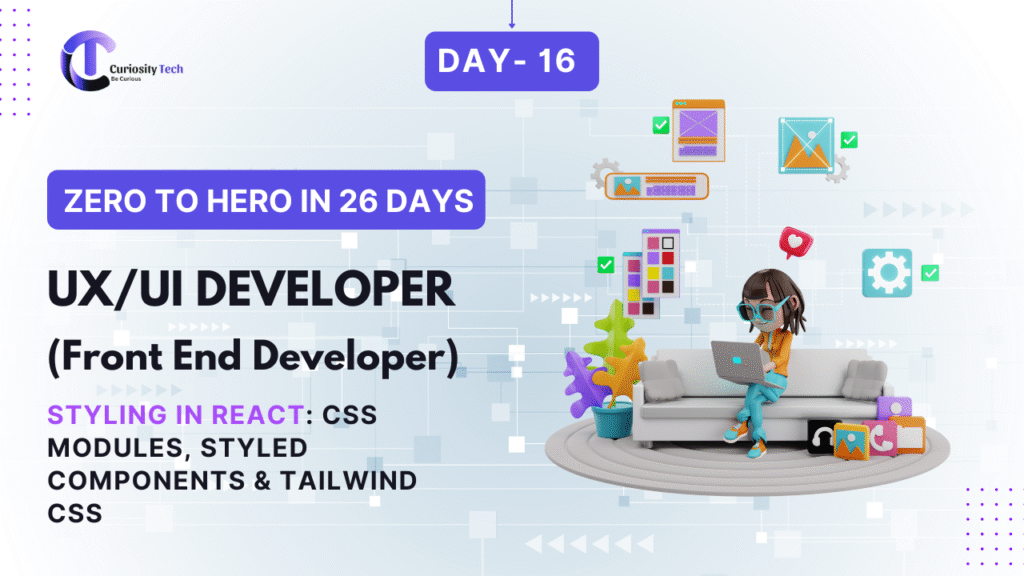When we talk about frontend development, most beginners rush straight into code—HTML, CSS, and JavaScript. But ask any senior developer or product designer, and they’ll tell you: great code without great UI/UX is like a beautiful car engine hidden in an unfinished body frame. Users don’t interact with your code; they interact with your design, your buttons, your flows.
That’s where UI (User Interface) and UX (User Experience) principles step in. For a frontend developer in 2025, understanding these principles is no longer “good to have” — it’s mandatory. Let’s explore them deeply.
🔑 1. Hierarchy & Visual Clarity
A good frontend developer should structure content in a way that guides users naturally. Think of it as a map — users should know where they are and where to go next.
Visual Hierarchy Layers (Table):
| Level | Purpose | Examples in Frontend |
| Primary | Most important action/content | CTA button (e.g., “Sign Up”), Page Title |
| Secondary | Supporting details | Subheadings, product description |
| Tertiary | Additional info | Tooltips, footnotes, disclaimers |
Frontend developers often achieve this using typography (font size, weight, contrast), color usage, and spacing.
🎨 2. Consistency Across Elements
Consistency creates trust. Imagine if a button looks green in one section and blue in another, with no reason. Confusing, right?
- Use a design system (or CSS variables/tokens).
- Keep navigation patterns predictable.
- Align micro-interactions (hover, click, transitions).
A frontend developer who codes consistent UI is indirectly improving the UX trust factor.
📱 3. Responsive & Mobile-First Approach
Mobile usage has crossed 70% globally, meaning your first thought as a developer should be: How does this look on a phone?
- Start designing for small screens first (Mobile-first CSS).
- Use relative units (em, rem, %) instead of px for scalability.
- Don’t forget touch-friendly tap targets (min 44px height recommended).
At CuriosityTech, when training budding developers, responsiveness is treated not as an add-on, but as a core principle. This mindset is what makes projects scalable across devices.
🧭 4. User-Centric Navigation
Navigation is the backbone of UX. If users can’t find something in two or three clicks, your design has failed.
Golden rules for frontend devs:
- Keep menus clean and decluttered.
- Add breadcrumbs for multi-level navigation.
- Implement search functionality where possible.
This is why many global product teams—and growing EdTech startups in India like CuriosityTech—emphasize usability testing early, so developers can fix issues before the product scales.
⚡ 5. Performance = User Experience
A beautiful UI that loads slowly is a failure. Google research shows that a 1-second delay can reduce conversions by 7%.
Frontend developers must:
- Optimize images (WebP, AVIF).
- Minify CSS/JS.
- Lazy load non-essential elements.
- Use Core Web Vitals as a benchmark.
Good UX is not just visual, it’s speed + reliability.
🖼️ 6. Accessibility First
An inclusive web is a better web. Accessibility (a11y) isn’t optional anymore — it’s law in many regions.
Accessibility checklist for frontend devs:
- Alt text for images.
- Proper semantic HTML (e.g., <button> instead of <div> for clickable).
- Keyboard-friendly navigation.
- Color contrast ratio of at least 4.5:1.
At CuriosityTech’s workshops, accessibility is always included — because a design that excludes people is simply unfinished.
📊 Infographic: Principles Hierarchy for UI/UX (Description)
Diagram Idea (Tree/Hierarchy):
👉 Description: This diagram visually shows that a frontend developer sits at the center, and each branch represents one principle. Together, they form a balanced product experience.
✨ Why These Principles Matter in 2025
The digital world is competitive. Businesses—from startups in Nagpur to global SaaS companies—are judged in the first 5 seconds of user interaction. A frontend developer who ignores UI/UX principles risks creating forgettable, frustrating products.
That’s why companies and learning communities like CuriosityTech (known for guiding students and professionals into tech careers through real-world training and mentorship) are placing UI/UX mastery as a core competency for frontend roles.
✅ Conclusion
A frontend developer today is not just a coder. They are a digital architect — shaping how people interact, engage, and connect with technology. By following UI/UX principles like hierarchy, consistency, responsiveness, user-centric navigation, performance, and accessibility, developers ensure they’re building not just websites, but experiences that last.
If you want to sharpen your frontend journey with real-world projects, mentorship, and career guidance, CuriosityTech is building that path for learners and professionals alike.
📌 Tags
#UIUXDesign #FrontendDevelopment #UXPrinciples #WebDesign #CuriosityTech #ResponsiveDesign #Accessibility #UserExperience
🔑 Keywords
UI/UX principles, frontend developer skills, responsive design, accessibility in frontend, user-centric navigation, performance optimization, visual hierarchy, CuriosityTech training, frontend developer guide 2025.



